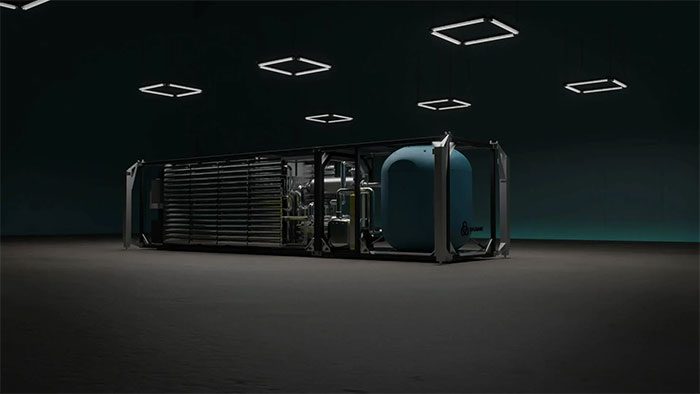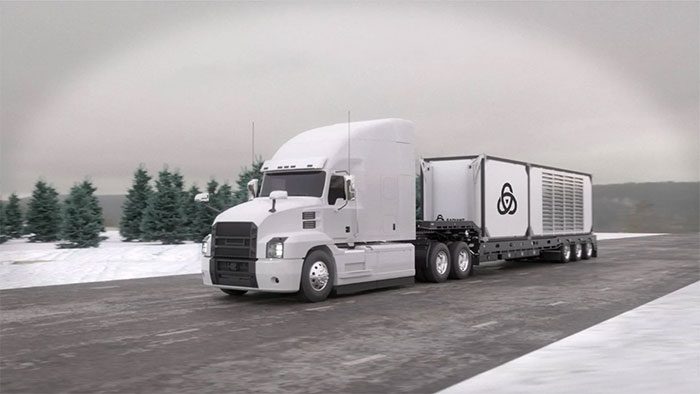A group of former engineers from SpaceX is developing the world’s first mobile, zero-emission energy source capable of delivering electricity to remote areas. Even in densely populated regions, these new reactors can be installed quickly. With this project, they are gradually realizing the trend of providing nuclear energy through small, lightweight, and cost-effective reactors.
In 2020, Radiant, their startup, received $1.2 million in funding from venture capitalists to develop small, mobile nuclear reactors applicable to both military and commercial uses. By April 2023, Radiant Industries raised $40 million to build a full-scale reactor prototype and recently received a $3.8 million award from the Energy Capability Improvement Fund in December of the same year.
Currently, floating nuclear power plants in the form of ships are also being developed, such as those produced by the Danish company Seaborg Technologies. However, Radiant’s new technology offers a completely new approach to mobility for nuclear reactors.
Radiant’s small reactors are expected to generate over 1.2 MW of power, enough to supply energy to about 1,000 homes for up to 8 years. They can be easily transported by air, sea, and land, thus providing affordable energy to remote communities, especially those with limited access to renewable energy sources, helping them reduce reliance on fossil fuels.

Radiant reactor core cooled by helium.
Doug Bernauer, CEO of Radiant and a former SpaceX engineer, worked on developing energy sources for future Mars colonies during his time at SpaceX. Bernauer founded Radiant with two other SpaceX engineers after recognizing the opportunity to develop a flexible, affordable energy source here on Earth based on their research on micro-reactors for Mars. He noted that many micro-reactors currently being developed are fixed in place, and no systems have been commercialized yet, so Radiant is striving to become a pioneer in this race.
Radiant has received two patents for mobile nuclear reactor technology, one of which helps reduce the costs and time required for refueling the reactor, while the other improves heat transfer efficiency from the reactor core. This small reactor will utilize advanced nuclear fuel that does not melt down and can withstand higher temperatures than traditional nuclear fuel. The helium coolant reduces the risk of corrosion and does not become radioactive, eliminating environmental pollution from leaks. Radiant has contracted with Battelle Energy Alliance to test its mobile micro-reactor technology at the Idaho National Laboratory (INL).

The complete Kaleidos reactor product package from Radiant, expected to be launched in 2026.
Kaleidos, Radiant’s flagship product, will be a mobile nuclear reactor designed to replace diesel generators. It contains all the necessary components to generate electricity housed within a small, rectangular container that can be mass-produced and easily transported. It replaces diesel generators in remote villages such as those in the Arctic and provides flexible backup power for hospitals, data centers, and isolated military facilities that often rely on fossil fuel-powered generators.
Kaleidos utilizes fans for air cooling, eliminating the need for onsite water, allowing it to operate anywhere. While generating electricity, Kaleidos can also provide 1.9 MW of thermal energy for heating or desalination. The air intake passively cools the reactor core through natural convection mechanisms. This will be the first commercial reactor to achieve fuel testing in over 50 years.

Trucks can easily transport the Kaleidos reactor to remote locations.
Dr. Jess Gehin, a scientist at INL, stated: “In some parts of the world, dependence on diesel fuel is not sustainable, and both solar and wind energy are either unavailable or impractical. Clean, safe nuclear reactors are emerging as the best alternative energy source for these areas.”
Mobile micro-reactors are not only better for the environment but also practical as they do not require continuous fuel transport. Instead, the clean fuel used for Radiant’s reactors can last for over four years. If Radiant’s testing goes smoothly, nuclear energy could soon be put into use. This will help power countless communities in remote areas and further promote the revival of nuclear energy in a world increasingly in need of cleaner energy solutions.


















































